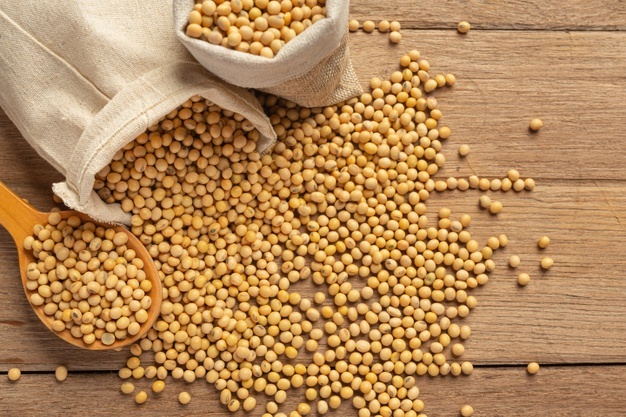Soybean, corn markets close higher ahead of USDA

The Dow Jones Industrials trade over 32,000.
On Monday, the CME Group’s farm markets lean on the soybean complex for strength.
At the close, the May corn futures are 3¢ lower at $5.42½. July corn futures are 2¼¢ lower at $5.31¼. New-crop December corn futures are 4¼¢ lower at $4.77½.
May soybean futures are 9¾¢ higher at $14.39. July soybean futures are 9¼¢ higher at $14.23. New-crop November soybean futures are 6¼¢ higher at $12.53.
May wheat futures are 5½¢ lower at $6.47½.
May soymeal futures are $0.30 short term lower at $417.90.
May soy oil futures are 0.89¢ higher at 52.69¢ per pound.
In the outside markets, the NYMEX crude oil market is -0.73 lower (-1.10%) at $65.36. The U.S. dollar is higher, and the Dow Jones Industrials are 469 points higher (+1.49%) at 31,965 points.
Britt O’Connell, ever.ag, says that as the market prepares for tomorrow’s WASDE report, it has seen some larger swings back and forth.
“South American weather has largely carried the same storyline to start this week as last week. Brazil is still struggling in many areas to get the soybean crop harvested with growing concerns around quality and the planting window narrowing for the safrinha corn crop. Argentina remains dry and chatter has begun about lowering their crop expectations lower,” O’Connell says.
O’Connell added, “The big number that we are watching in tomorrow’s report is the same as last month’s – exports. Last month the expectation was that USDA would lower ending stocks on corn with exports being raised near 2.75 billion and a 2.6 billion number was printed. Year-to-date, the U.S. has sold approximately 2.3 billion bushels. Since the Feb. report, prices in S.A. have continued to move lower, creating more competition for the United States in the global market. Overall, the expectation of the trade is for lower corn ending stocks with an average guess at 1.47 billion bushels.”
For soybeans, the expectation in tomorrow’s report is once again lower ending stocks, but is that possible, she asks.
“We are already at the tightest stocks-to-use we have seen since the 2013/14 market. U.S. crush has been clipping along at a record pace, for now. Many crushers are not showing an offer for soybean meal past May or June obviously indicating concern over the ability to gain ownership in the depths of summer. It is unlikely and unseasonal for China to buy more U.S. soybeans this time of year; the rationing will inevitably have to come from the crush side,” O’Connell says.
Al Kluis, Kluis Advisors, says that it’s important to watch the direction of the spread prices of contracts.
“On Friday, the grain markets rallied on fund-buying and concerns about hot dry weather in Argentina. The strong jobs report on Friday pushed interest rates higher and also brought investor buying into the grain markets as an inflation hedge,” Kluis stated in a daily note to customers.
Kluis added, “The way the bull spreads are working again in the corn and soybean markets is a positive signal that we will continue to see strong demand for both corn and soybeans moving forward. I am watching the March-to-May corn spread. This spread closed Friday with March at a 7¢ premium to the May. Right now, the spread is trading with March at a 17¢ premium to the May contract. The March 2021 corn contract expires Friday. If it stays at this large premium to the May, then it is a positive signal for corn prices.”
David Tolleris, WxRisk.com, says that needed rain is headed toward Argentina this week.
“Warm temperatures arrived across the Corn Belt this weekend, and we expect warm (and near-record) temperatures the next three days. This will get rid of a lot of snow in the central U.S. Rain moved across the Delta and deep South over this weekend, and there is more on the way,” Tolleris stated in a daily note to Kluis’s customers.
Tolleris added, “It was another wet weekend in central Brazil, and they have more rain in the forecast for later this week. Argentina is dry but the extended forecasts for later this week bring more rain to some of the dry areas.”
Read also
Wheat in Southern Brazil Impacted by Dry Weather and Frosts
Oilseed Industry. Leaders and Strategies in the Times of a Great Change
Black Sea & Danube Region: Oilseed and Vegoil Markets Within Ongoing Transfor...
Serbia. The drought will cause extremely high losses for farmers this year
2023/24 Safrinha Corn in Brazil 91% Harvested
Write to us
Our manager will contact you soon



